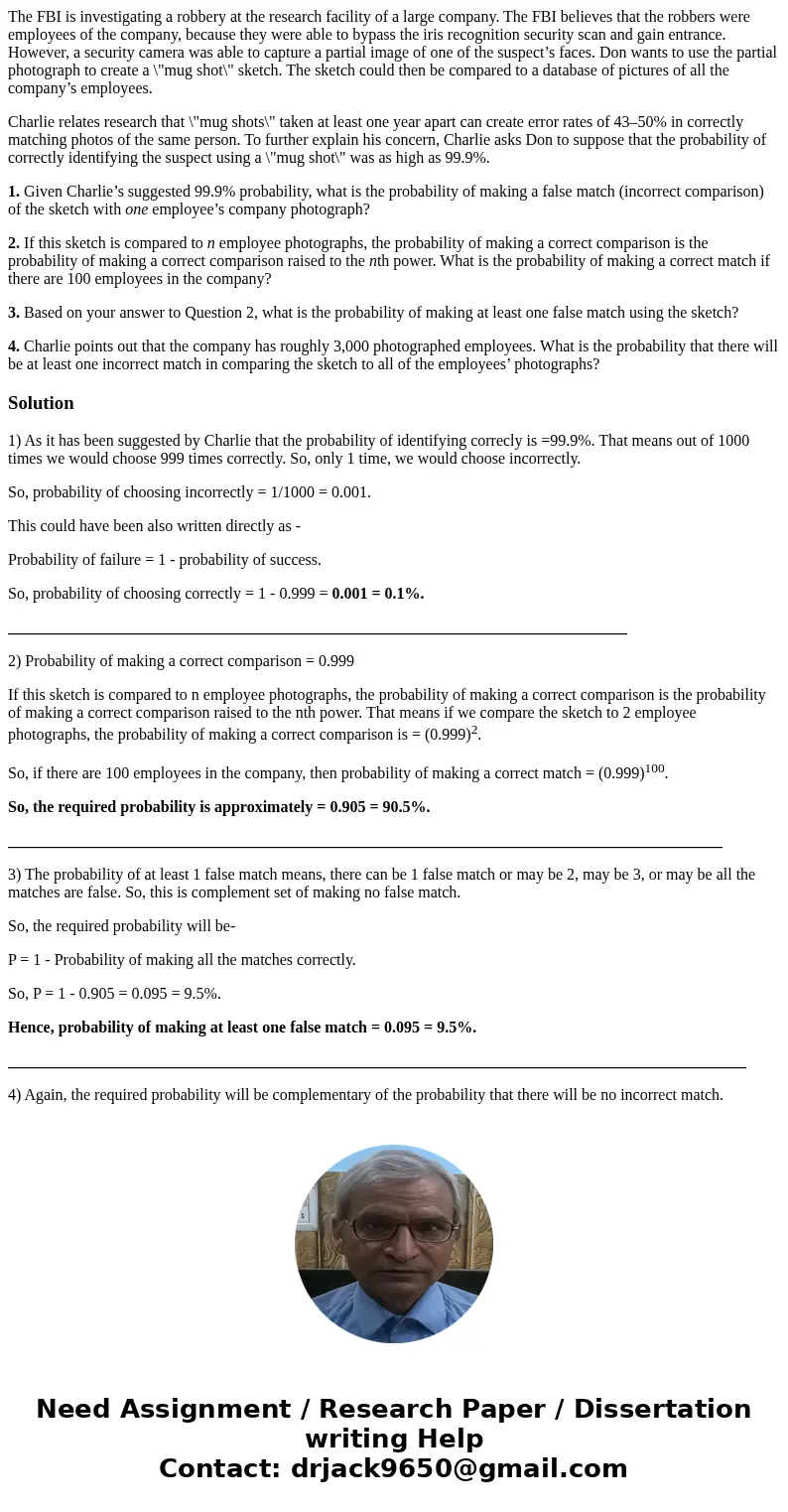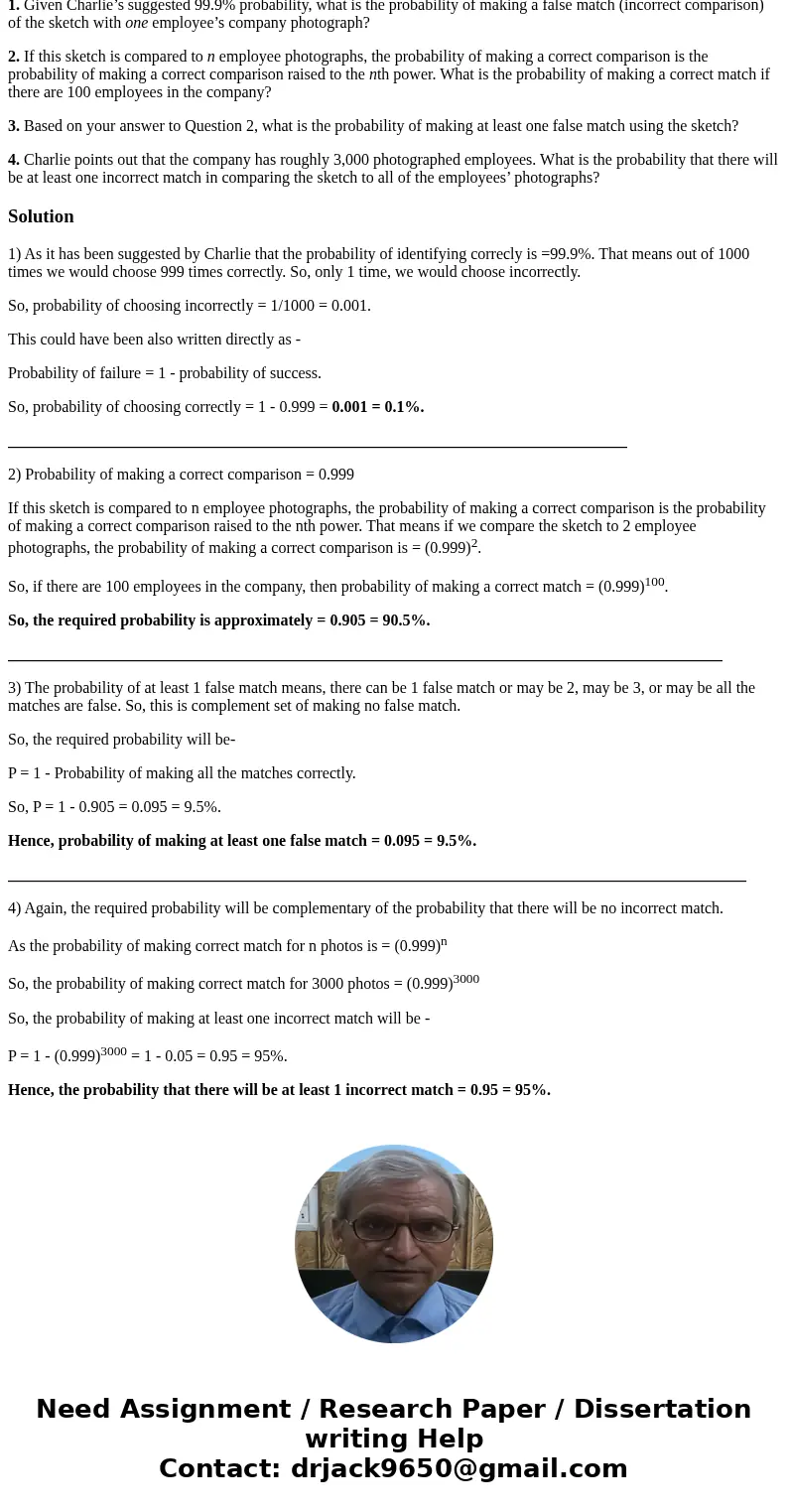The FBI is investigating a robbery at the research facility
The FBI is investigating a robbery at the research facility of a large company. The FBI believes that the robbers were employees of the company, because they were able to bypass the iris recognition security scan and gain entrance. However, a security camera was able to capture a partial image of one of the suspect’s faces. Don wants to use the partial photograph to create a \"mug shot\" sketch. The sketch could then be compared to a database of pictures of all the company’s employees.
Charlie relates research that \"mug shots\" taken at least one year apart can create error rates of 43–50% in correctly matching photos of the same person. To further explain his concern, Charlie asks Don to suppose that the probability of correctly identifying the suspect using a \"mug shot\" was as high as 99.9%.
1. Given Charlie’s suggested 99.9% probability, what is the probability of making a false match (incorrect comparison) of the sketch with one employee’s company photograph?
2. If this sketch is compared to n employee photographs, the probability of making a correct comparison is the probability of making a correct comparison raised to the nth power. What is the probability of making a correct match if there are 100 employees in the company?
3. Based on your answer to Question 2, what is the probability of making at least one false match using the sketch?
4. Charlie points out that the company has roughly 3,000 photographed employees. What is the probability that there will be at least one incorrect match in comparing the sketch to all of the employees’ photographs?
Solution
1) As it has been suggested by Charlie that the probability of identifying correcly is =99.9%. That means out of 1000 times we would choose 999 times correctly. So, only 1 time, we would choose incorrectly.
So, probability of choosing incorrectly = 1/1000 = 0.001.
This could have been also written directly as -
Probability of failure = 1 - probability of success.
So, probability of choosing correctly = 1 - 0.999 = 0.001 = 0.1%.
______________________________________________________________________________
2) Probability of making a correct comparison = 0.999
If this sketch is compared to n employee photographs, the probability of making a correct comparison is the probability of making a correct comparison raised to the nth power. That means if we compare the sketch to 2 employee photographs, the probability of making a correct comparison is = (0.999)2.
So, if there are 100 employees in the company, then probability of making a correct match = (0.999)100.
So, the required probability is approximately = 0.905 = 90.5%.
__________________________________________________________________________________________
3) The probability of at least 1 false match means, there can be 1 false match or may be 2, may be 3, or may be all the matches are false. So, this is complement set of making no false match.
So, the required probability will be-
P = 1 - Probability of making all the matches correctly.
So, P = 1 - 0.905 = 0.095 = 9.5%.
Hence, probability of making at least one false match = 0.095 = 9.5%.
_____________________________________________________________________________________________
4) Again, the required probability will be complementary of the probability that there will be no incorrect match.
As the probability of making correct match for n photos is = (0.999)n
So, the probability of making correct match for 3000 photos = (0.999)3000
So, the probability of making at least one incorrect match will be -
P = 1 - (0.999)3000 = 1 - 0.05 = 0.95 = 95%.
Hence, the probability that there will be at least 1 incorrect match = 0.95 = 95%.


 Homework Sourse
Homework Sourse